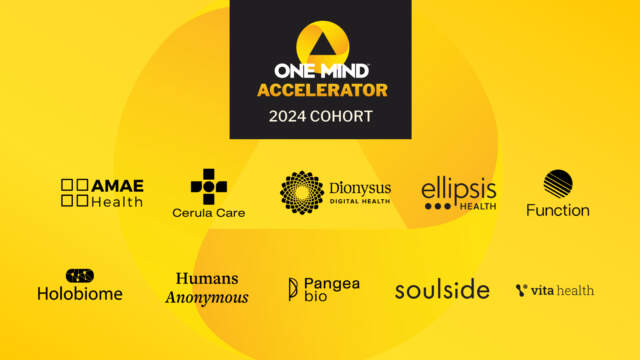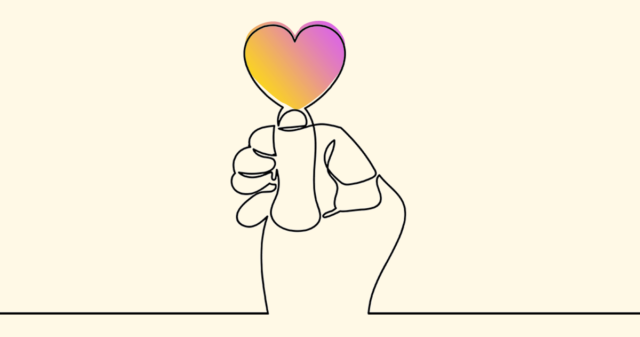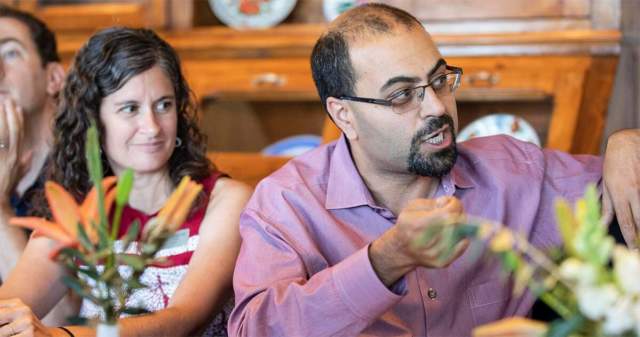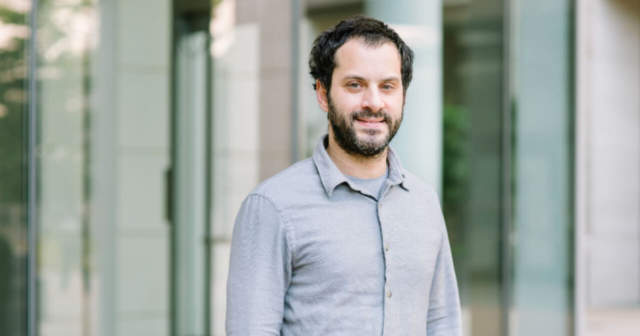Major depression and anxiety comprise two of the most widespread psychiatric illnesses, and the suffering these engender debilitates severely: depression is the largest source of adult disability worldwide, according to the World Health Organization. Current medications are far from satisfactory therapies for these conditions—for those who respond, the effect is often incomplete, and then can carry troublesome side effects. Interestingly, these two disorders occur together in about 50% of cases, and treatments for one can also treat the other, suggesting shared mechanisms in the brain.
Now, new hope is on the horizon, from the lab of One Mind / Janssen Rising Star Translational Research Awardee, Mazen Kheirbek, PhD. Dr. Kheirbek, an Assistant Professor of Psychiatry and Neuroscience at UCSF, is building an understanding of how the connections between two brain regions involved in the processing of stress underpin the development of depression and anxiety. With this knowledge in hand, he is establishing a new basis for targeted treatments for these conditions.
Exploring the Neural Basis for Anxiety
Scientists have long observed that the biological mechanisms by which chronic stress leads to depression and anxiety route through a neural and hormonal circuit called the hypothalamic-pituitary-adrenal (HPA) axis, or simply, the “stress axis”. Recently, Dr. Kheirbek and others have discovered that another brain region involved in emotion processing, the ventral hippocampus (vHPC), appears to be involved first, by regulating the stress axis. Now, Dr. Kheirbek and his lab are revealing just how the vHPC and the stress axis link up to modulate depression and anxiety, to enable the development of neuromodulatory treatments.
Investigating this circuit in mice in 2017, Dr. Kheirbek’s investigations have built a chain of discoveries toward this end. First, Kheirbek’s team measured neural activity in the vHPC as mice explored out of a safe, closed area into an exposed environment (scary for mice). While in the open space, the mice’s vHPC neural activity increased, and the mice most avoidant to the open space also showed the greatest neural activity surge when exposed. Finding this neural anxiety signature enabled Kheirbek’s team to make another discovery: When Kheirbek silenced this signature using optogenetics (manipulating neural activity with light), mice spent more time exploring the open environment, suggesting that their anxiety was reduced by influencing neural activity in the vHPC.
Refining Treatment Targets
But could better treatment targets lie even deeper? Kheirbek and his team mapped the neural circuit projecting from the vHPC to the hypothalamus, and, through further optogenetic manipulation, found that this circuit mediated the mice’s exploratory behaviors. Confirming that these behavior changes came from anxiety-related changes in the brain, they assessed the type of cells that made up this circuit, and found that it was enriched in anxiety cells relative to other projections from the vHPC.
Now, using a genetically engineered mouse model, Kheirbek and colleagues have analyzed the molecular composition of these anxiety cells, enabling them to find which other brain circuits incorporate them, and thus to determine which circuits are involved in anxiety—these circuits could all form prospective treatment targets.
An Innovative Treatment Approach
Ultimately, Dr. Kheirbek’s team plans to use this knowledge to influence these circuits using closed-loop neuromodulation techniques that could be delivered by a small implant to treat severe human depression and anxiety, much like a “pacemaker for the brain”.
As Dr. Kheirbek says, “I believe that a cutting-edge, integrative approach is required if we are to find novel targets and therapies for improving emotional health and the treatment of debilitating mental illnesses. I believe that this award will accelerate my goal of developing novel therapeutics for the treatment of those individuals suffering from mental illness.”
It is just this kind of “outside the box” innovation that can someday help millions climb outside of the dark box that is treatment-resistant major depression and anxiety. The National Institute of Mental Health concurs: it has provided Dr. Kheirbek with a major R01 grant, to expand this research. We at One Mind thank Janssen Research and Development and our donors for enabling us to provide our Rising Star Award to this remarkable scientist.
Your donation helps One Mind launch promising early-career investigators and their innovative research through the Rising Star Awards. Make a donation today that will accelerate ground-breaking discoveries in brain illness.






